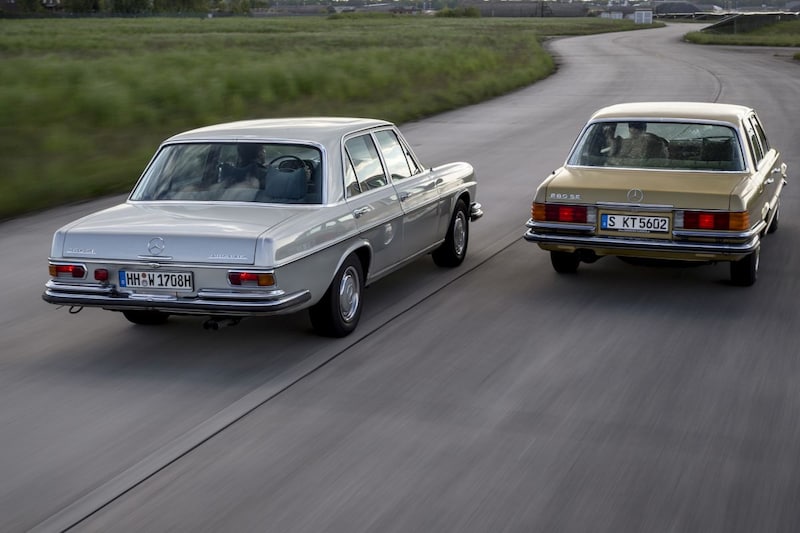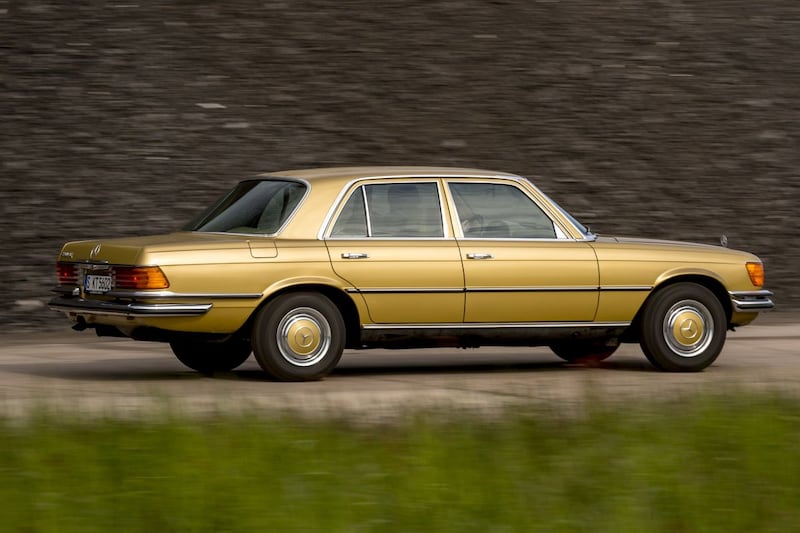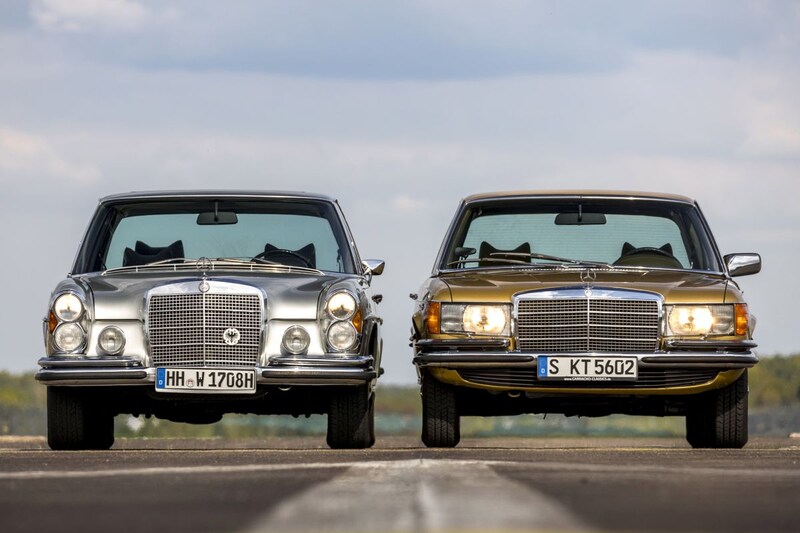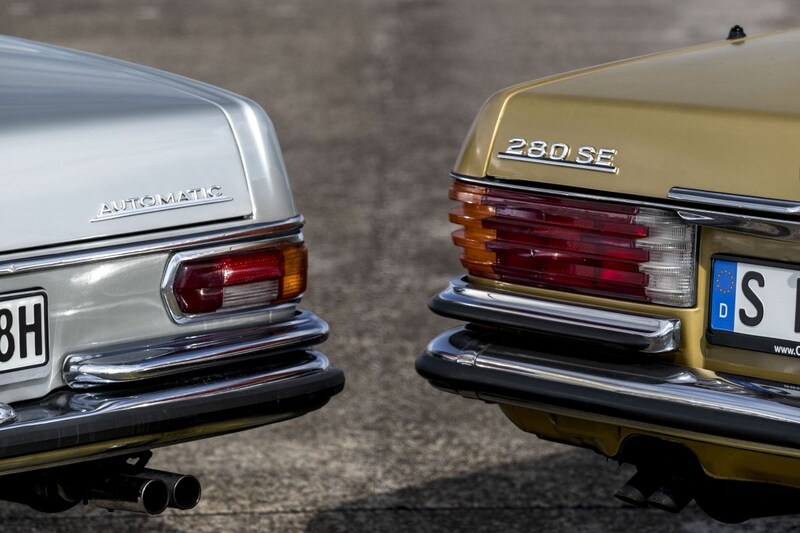Top class Mercedes-Benz defined in 1972


The Mercedes S-class has been a household name in limoland for more than forty years. About fifty years ago, however, you did not yet speak of an S-class, and one of the thickest Benzes was simply called 220 S or 280 SE, for example, depending on the engine. Only with the transition from the limo with internal code W108 to W116 did the S-class really take shape. This test is about that phase in the history of the Mercedes S-class. How big was that step?
The fact that Mercedes stuck to an ancient rear-axle technique until the 1970s bordered on rigidity. It was only when this began to threaten the reputation that the brand turned around.
Mercedes-Benz’s pendulum axle, BMW technical director Helmut Werner Bönsch taunted, is “the most admirable piece of home craft applied to the least suitable object in the history of the automobile”. Indeed, sticking to a type of suspension that originated in the 1930s Mercedes 170 bordered on constructive rigidity, even if the principle had been refined over the years. In the model series 108/109, the predecessor of the later officially named S-class, the swing axle was used until 1972.
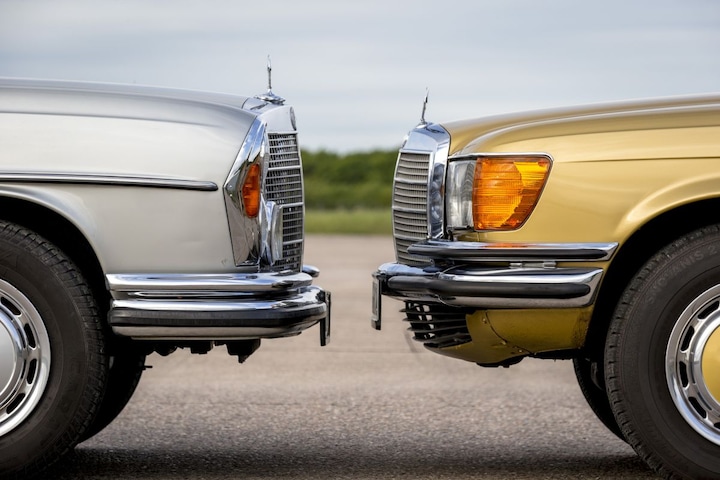
On the left, the W108 is not yet the Mercedes-Benz S-class, but a predecessor.
A year earlier, the silver-colored 280 SE walked off the band that figures in the photos. It therefore houses under its back the last evolution phase of the “Fritz Nallinger memorial axle”, so named after Mercedes’ head of development since years ago. The worst flaws had already been removed by then. Nevertheless, the disadvantages associated with the principle remained considerable: when the front of the car dives down under hard braking, the rear axle gets “bow-legged”. The unloaded rear wheels then develop a positive camber, the track width becomes narrower and this can lead to unstable driving behavior, especially in bends. This phenomenon does not occur with the successor W116, in the photos here in the completely hip ‘Ikonengold’. It is equipped with the then new axle with slanted wishbones and thus makes a figurative giant leap forward.

On the right the limo that would already be known as the Mercedes-Benz S-class. With much better driving characteristics!
But the conservative W108 was also revolutionary in one respect: with this model, Mercedes broke with the unitary body in 1965, i.e. the practice of providing the mid-range and top models with the same body with only a slightly longer nose and some detail differences, as in the Heckflosse series. But as before, the W108 embodies the Mercedes style of the good old days: a thin steering wheel with horn ring, quality that seems handcrafted here and there, a regal view of a solemnly arched bonnet with at the end the proud, for the last placed star on a pedestal.

The W108 inside
The driving comfort is excellent, only the somewhat raw-sounding six-cylinder at high revs and the rather coarse-looking automatic control disturb the sensitive connoisseur.
Only with forced load changes do you notice the defects inherent in the construction, although they hardly pose any danger, except during abrupt braking in bends. The hydropneumatic compensating spring suppresses treacherous breakout attempts from the rear, the limit is further away than expected. Despite violent body movements, the W108 maintains its course even during violent maneuvers. But test drivers already noticed at the time that the smaller ‘Strich-8’, which was equipped with the new ‘diagonal pendulum axle’, behaved more cheerfully at the limit. In its final years, the stigma of ‘technologically outdated’ therefore became increasingly attached to the W108.

Its smaller brother Strich-8, ancestor of the E-class, drove better than the W108 in its later days.
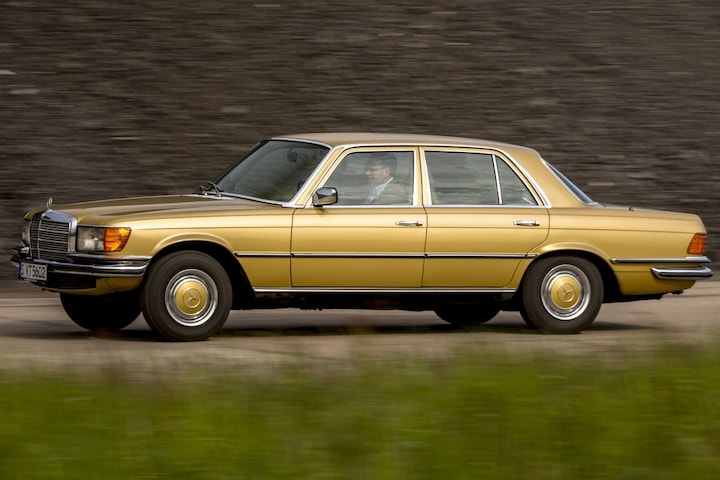
The gold-colored W116 can indeed do everything better. When braking sharply, he always remains calm, even if he was not driving straight ahead at the time. The fact that it does not come to a stop earlier than its predecessor is probably mainly due to the softer tires in this case. In the slalom he achieves higher cornering speeds. However, it still exhibits the characteristic unwieldy behavior of a top-class Mercedes, although the manual gearbox in combination with the rev-loving six-cylinder twin-cam (M110) secretly makes it a quite dynamic car.
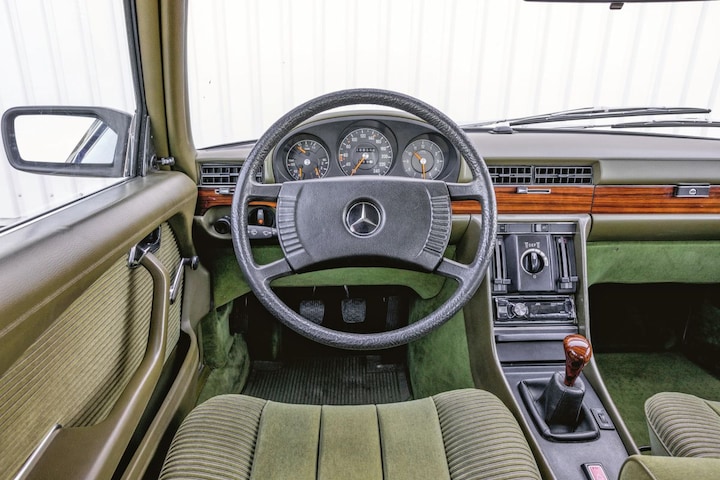
Look, a manual gearbox, it secretly makes it quite a dynamic car.
Compared to the delicate, beautifully detailed W108, the 1970s S-Class looks like a clumsy hunk of metal. The interior, with its thick-rimmed steering wheel, doors that close like vault doors and wide velvet-upholstered seats, exudes the careless affluence of that time, when a Mercedes was still the ‘gute Stern auf allen Strassen’. In addition, the sound insulation of the W116 is better than its predecessor and is therefore measurably quieter while driving.
A big step, that W116
Revolutionary is, in addition to the mentioned chassis technology, not least the appearance. With the transition from upright to horizontal headlights in 1972, a new stylistical era also dawned in Stuttgart. Three years after the moon landing, it’s a small step for humanity, but a big one for Mercedes.
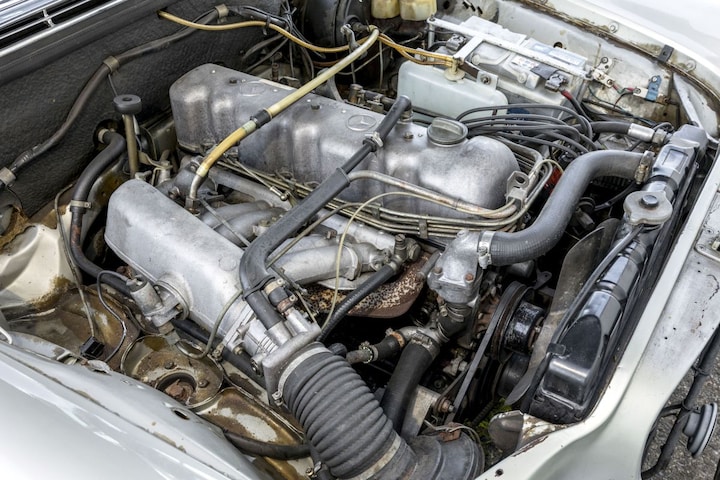
The 2.8 liter 6-in-line, with injection.
Technical data 280 SE – W108
Engine 6 cyl. in line, in front in length, 1 top. camshaft, timing chain, 2 cl./cylinder, mech. injection (Bosch)
Cyl.inh. 2,778 cc, bore x stroke 86.5 x 78.8 mm
max. power 118 kW (160 hp) at 5,500 rpm
max. torque 240 Nm at 4,250 rpm
Top speed 185 km/h
Drive 4-speed automatic (standard manual 4-speed, option 5-speed), rear wheels
Wheel suspension from independent, double crossbars, coil springs, stab./swing axle with hydropneumatic compensation spring, coil springs, rubber auxiliary springs
Brakes v/a discs all around
Tire test car 205/70R14 95H
Consumption 12.3 l/100 km super
Tank capacity 82 l
Luggage compartment 610 l
max. permissible weight 1,995 kg
Retail price (1971) €11,994 (fl.26,432)
All data according to factory specifications
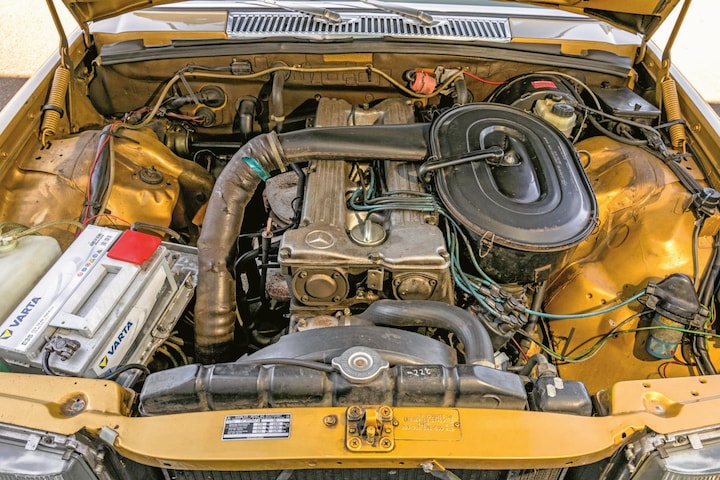
Technical data Mercedes 280 SE – W116
Engine 6 cyl. in line, in front in length, 2 topl. camshafts, timing chain, 2 cl./cylinder, mech. injection (Bosch K-Jetronic)
Cyl.inh. 2,746 cc, bore x stroke 86.0 x 78.8 mm
max. power 130 kW (177 hp) at 6,000 rpm
max. torque 233 Nm at 4,500 rpm
Top speed 200 km/h
Manual drive 4-speed (option 5-speed or 4-speed automatic), rear wheels
Wheel suspension from independent, double wishbones, coil springs, stab./diagonal wishbones, stab., rubber auxiliary springs
Brakes v/a discs all around
Tire test car 185R14
Consumption 12.5 l/100 km super
Tank capacity 96 l
Luggage compartment 530 l
max. permissible weight 2,130 kg
Retail price (1977) €21,953 (fl.48,380)
All data according to factory specifications
.
– Thanks for information from Autoweek.nl
